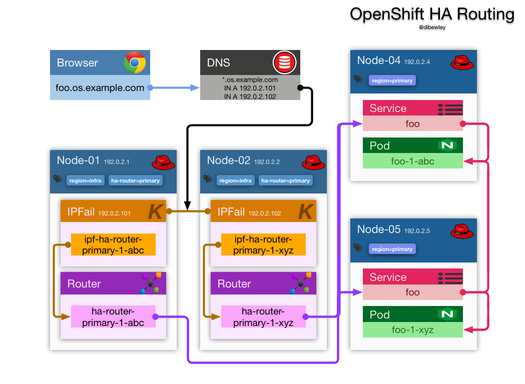Configuring OpenShift with Multiple Sharded Routers
I needed to host a service that would be consumed by a closed client that insists on speaking HTTPS on port 50,000. To solve this, I added a 2nd router deployment and used the OpenShift router sharding feature to selectively enable routes on the 2nd router by way of selectors. To summarize: Existing HA router: HTTP 80 HTTPS 443 Haproxy Stats 1,936 Added HA router: HTTP 49,999 HTTPS 50,000 Haproxy Stats 51,936 How To Open infra node firewalls Open firewall on infra nodes where router will run to allow new http and https port iptables -A OS_FIREWALL_ALLOW -m tcp -p tcp --dport 49999 -j ACCEPT iptables -A OS_FIREWALL_ALLOW -m tcp -p tcp --dport 50000 -j ACCEPT This can also be done with Ansible and the os_firewall role in your playbook.



